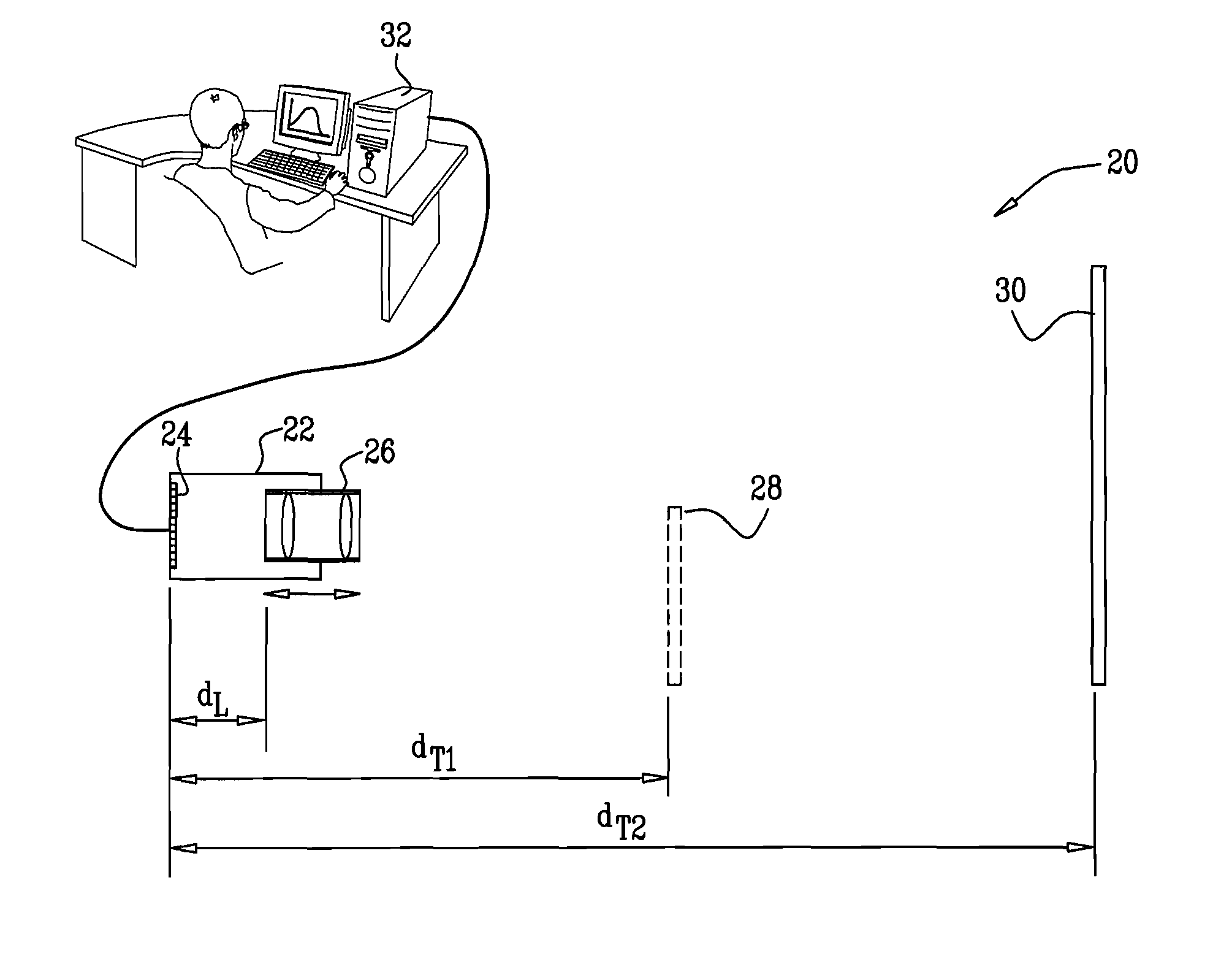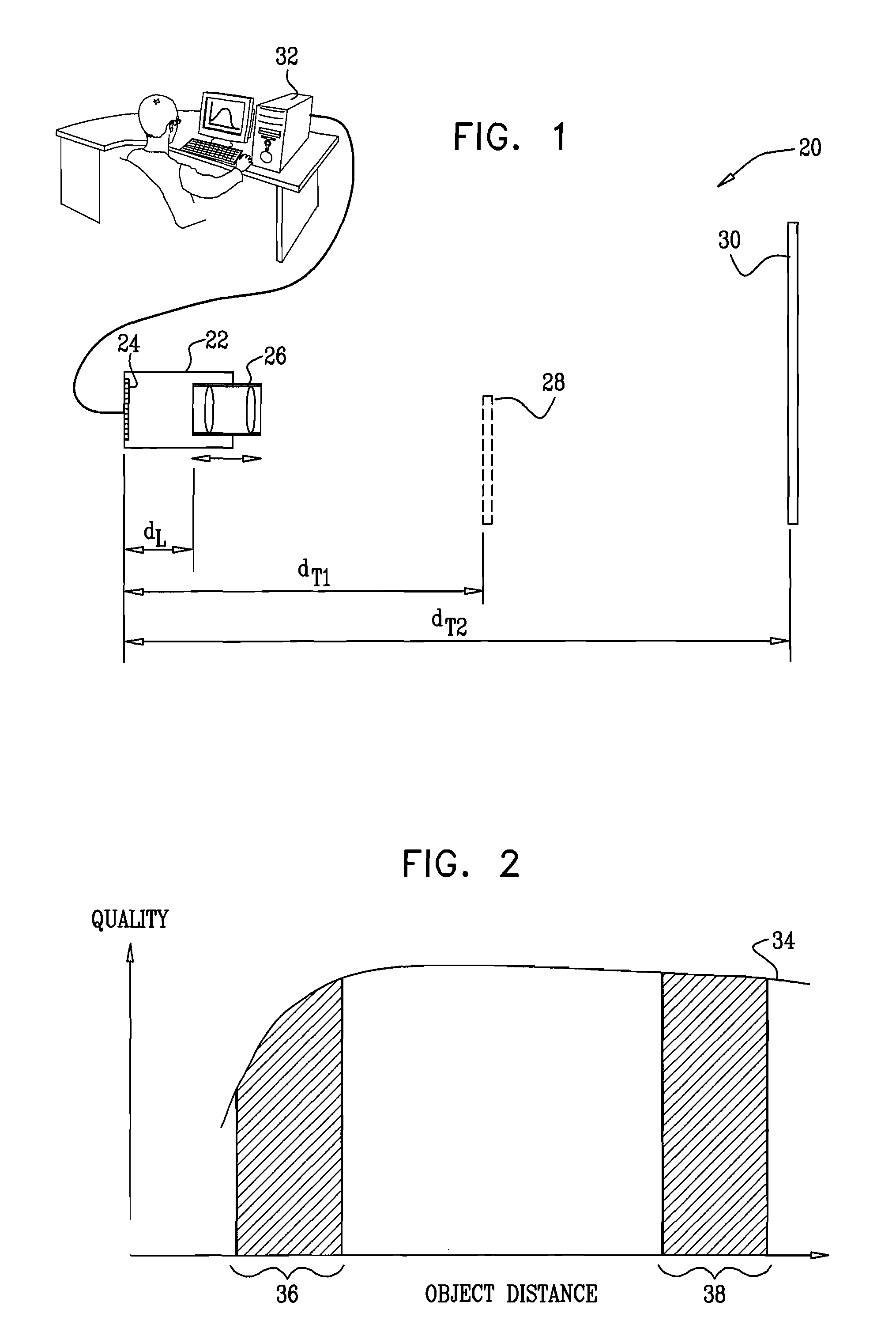Optical alignment of cameras with extended depth of field
a technology of depth of field and optical alignment, applied in the field of optical alignment of imaging devices, can solve the problem of complicated finding the optimal working point, and achieve the effect of facilitating image reconstruction
- Summary
- Abstract
- Description
- Claims
- Application Information
AI Technical Summary
Benefits of technology
Problems solved by technology
Method used
Image
Examples
Embodiment Construction
[0037]As noted earlier, in devices with extended depth of field, such as the camera described in the above-mentioned WO 2007 / 054938, adjusting the optics to the optimal working point may be difficult or impossible using a conventional optical calibration procedure. The optimal working point may not be the point of sharpest focus, and even if it is, the change in focal quality as a function of position of the optics may be very gradual. Consequently, it may be difficult to identify the point of sharpest focus with sufficient accuracy to provide the desired level of precision in optical adjustment.
[0038]In some embodiments of the present invention, as a part of a solution to this problem, calibration procedures first find a predefined “reference point” of the optics in the imaging device under calibration, rather than immediately finding the “working point.” The reference point is defined as a known position of the optics, which can be found and measured accurately and repeatably, but...
PUM
 Login to View More
Login to View More Abstract
Description
Claims
Application Information
 Login to View More
Login to View More - R&D
- Intellectual Property
- Life Sciences
- Materials
- Tech Scout
- Unparalleled Data Quality
- Higher Quality Content
- 60% Fewer Hallucinations
Browse by: Latest US Patents, China's latest patents, Technical Efficacy Thesaurus, Application Domain, Technology Topic, Popular Technical Reports.
© 2025 PatSnap. All rights reserved.Legal|Privacy policy|Modern Slavery Act Transparency Statement|Sitemap|About US| Contact US: help@patsnap.com



